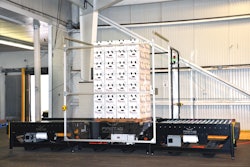1. Speed and efficiency reductions. Gathering data to document these reductions is the only way to justify a return on investment on something new.
2. Quality decreases. The number of out-of-spec or rejected containers increases.
3. Changeover time increases. The cost associated with this type of downtime can
really add up.
4. Jams and failures due to damage and deterioration. On a rotary glue labeler, glue build-up on each station tends to be a problem. Sometimes, operators then unwittingly damage the labeler by using screw drivers or other tools to scrape away the glue. This damage over time can contribute to increased jams and failures.
5. Maintenance increases. Some companies use specialized maintenance software like MP2 to not only help keep maintenance running smoothly and avoid surprises, but to track equipment maintenance trends to provide the big picture.
6. Component obsolescence. Parts are no longer available from or supported by the machinery manufacturer or third-party suppliers, including old PLCs, proprietary controllers, or even outdated servo gear.
7. Requirements change but the line does not. Marketing may want a new package format or a new size. Replacing may be a better option than modifying the labeler to do what it wasn’t designed to do.
1. Speed and efficiency reductions. 2. Quality decreases. 3. Changeover time increases. 4. Jams and failures due to damage and deterioration. 5. Maintenance increases.6. Component obsolescence. 7. Requirements change but the line does not.Liked this article? Download the entire playbook here.






















